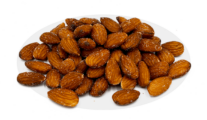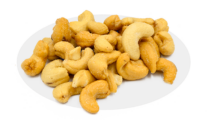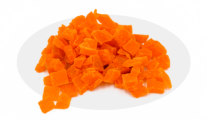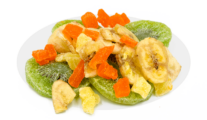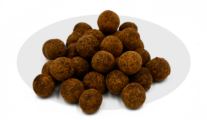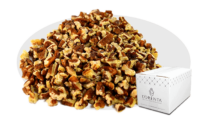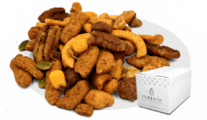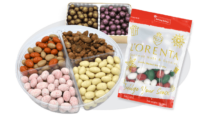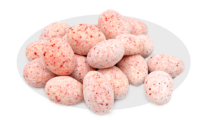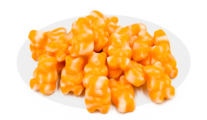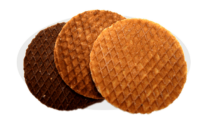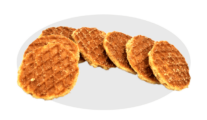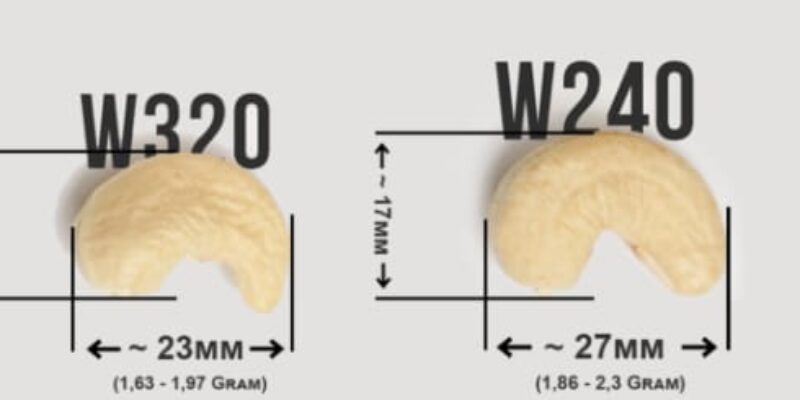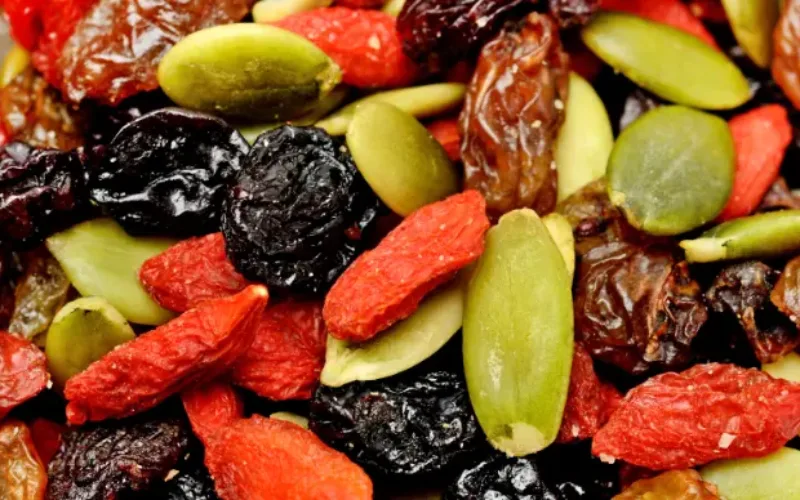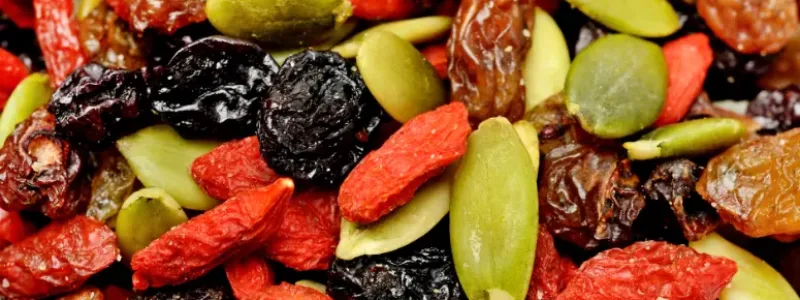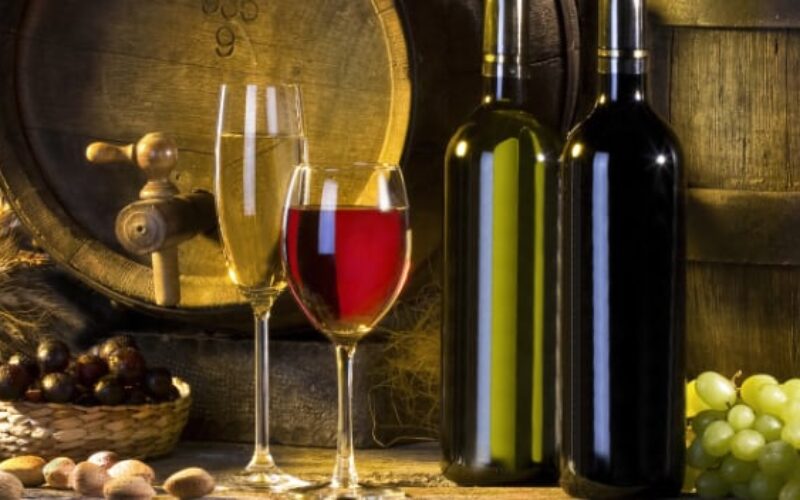Written By Sam Henselijn
Cashew Nuts Explained
Have you ever wondered about the origin of Cashews? Well, you are not alone. Many have also asked: “Where do cashew nuts come from?” It is easy to think that they grow in shells, and If you have felt that way, we’ve written this guide to give you the correct info! This article will help you find out the its origin
What Are Cashews?
Cashews are not nuts. They are fruits that grow on the cashew tree. These trees survive in tropical regions. The tree creates red flowers, blossoming into cashew apples with red and yellow oval shapes. They are incredibly pulpy and juicy. They are often used to make tropical fruit drinks. However, scientifically, they are not the actual fruits. The kidney-shaped fruits growing on them are the fruits. They are generally known as drupes. And they are the ones that become cashew nuts.
It is not advisable to eat drupes in their raw form. This is because they contain numerous toxins, particularly anacardic acid. Anacardic acid is a potent skin irritant similar to poison ivy’s toxin. Before you eat the nuts, you must first remove the toxin on them. And the most popular way people do this is by roasting them to destroy these toxins. Roasted and salted cashews are delicious. It would be best if you tried them out. Now, let’s find the answer to the question: “Where do cashew nuts come from?”
The Origin
The scientific name is Anacardium Occidentale. It originates from the tropical climates in Brazil. Although many believe that it originates from India and Africa, this is not true. However, the temperatures in Africa and India are ideal for its growth. Today, Brazil is no longer the largest producer. Africa and Asian countries like India, Côte d’Ivoire, and Vietnam have become more active in producing cashews.
Different Types of Cashews?
There are various varieties. And some are better than others. We will discuss them and how they differ from each other. Here are the five popular types.

1. W-180
This is the largest of all nut varieties. It is also the most expensive.
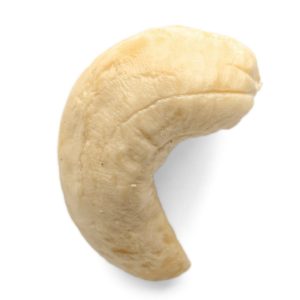
The W-180 is widely known as the king of cashews. This is because they have the best grade among other varieties. While it is pretty expensive, the W-180 offers the best value for your money. It won’t break when you buy it. It comes wholly intact. So, if you don’t like buying the ones that break, the W-180 is the ideal option to go for.
2. W-210
The W-210 is not as big as the W-180. However, it’s still bigger than most varieties. It is widely known as the Jumbo size. So, they are still large even if they are not as large as the W-180.
3. W-240
W-240 is the next size after W-210. They are one of the most popular varieties. The W-240 is generally known as the standard size. They are not as expensive as W-180 and W-210. However, they are still big enough to use. One of the remarkable things about the W-240 is that you will start seeing the fall in prices here.
4. W-320
You can easily find the W-320 everywhere. They are also the most widely supplied and sold size worldwide. They provide an ideal balance between cost and size. And a lot of consumers are comfortable with the W-320. They are considered large, but the price is what attracts many consumers to go for W-320.
5. W-450
The W-450 is incredibly famous for its affordability. They are the minor type. After the W-450, the following sizes are pieces. They are a great choice if you want whole ones, but you are under a budget.
What is Cashew Butt?
Cashew butts are the bulkier part of the nuts. They are usually cut from whole cashews. Many companies add these butts to their mix.
However, at LorentaNuts.com, we understand the importance of quality snacking. Thus, we don’t add these butts to our mix. Adding butts to cashew mixes makes it cheaper. This will, in turn, significantly reduce their quality.
We also use the W-180 and W-240 varieties. They are the best grades. We prioritize quality and our customers’ satisfaction. And we ensure we put these factors first when we produce our cashew mix. Our premium products include Wasabi Soy Cashews, Milk Chocolate Cashews, and Butter Toffee Cashews.
Final Thoughts
Cashew nuts are delicious. They are native to Brazil but are now grown all over the world. They also come in various sizes. With this article, you now know the answer to the question: “Where do cashew nuts come from?” At LorentaNuts.com, we only use the best grades for our mix. We pride ourselves on prioritizing quality in all of our products.
Why can’t cashews be eaten in their raw form?
Cashews in their raw form contain numerous toxins, including anacardic acid, a potent skin irritant similar to the toxin found in poison ivy. To make them safe for consumption, cashews must be roasted to destroy these toxins.
Why does LorentaNuts.com use specific varieties of cashews in their products?
LorentaNuts.com prioritizes quality and customer satisfaction, choosing to use the best grades of cashews, such as W-180 and W-240. These varieties are selected for their superior quality to ensure that the cashew mixes meet the high standards expected by consumers.
Sam Henselijn Author’s Biography – Meet L’Orenta Nuts CEO
Copyright 2024 L’Orenta Nuts
L’Orenta Nuts proudly holds the SQF food safety certification, symbolizing our unwavering dedication to upholding the highest standards of food safety and quality. This certification guarantees that our products undergo rigorous scrutiny, ensuring transparency, traceability, and adherence to global food safety regulations for the utmost consumer confidence.
L’Orenta Nuts has the HACCP (Hazard Analysis and Critical Control Points) certification is a systematic approach to identifying, evaluating, and controlling food safety hazards. It ensures that food products are produced and handled in a manner that minimizes risks and complies with safety standards.
Our GMP (Good Manufacturing Practices) certification ensures that a manufacturing facility adheres to comprehensive quality and safety standards while producing pharmaceuticals, food, and other consumer goods, promoting consistency, quality, and compliance with regulatory requirements.
L’Orenta is an FDA-approved manufacturing facility and has met the rigorous standards set by the U.S. Food and Drug Administration. It demonstrates compliance with regulations, ensuring the production of safe and high-quality food products.


